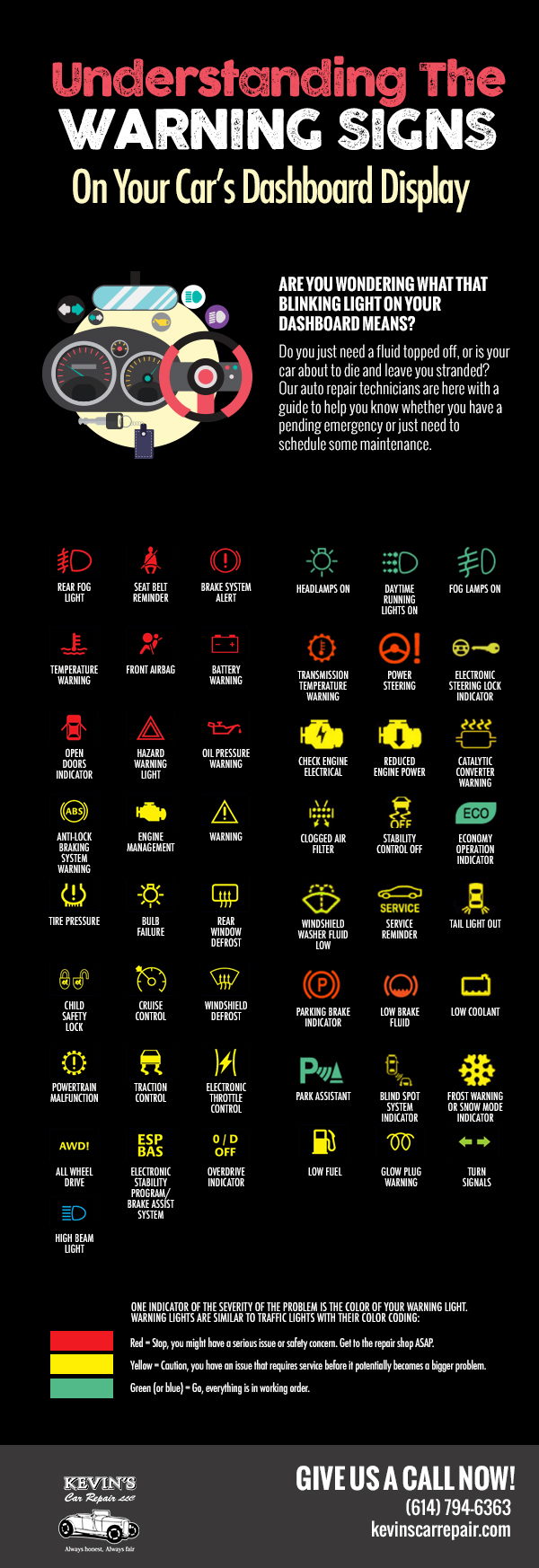How To Determine One Of The Most Typical Warning Lights On Your Control Panel And What They Mean
How To Determine One Of The Most Typical Warning Lights On Your Control Panel And What They Mean
Blog Article
Short Article Author-Wilkerson Hurst
When you lag the wheel, those control panel warning lights can be an actual mystery. Yet did you recognize that deciphering them can save you from potential vehicle troubles later on? From find out here threatening check engine light to the refined oil stress caution and the ever-important battery light, each one acts as a vital signal from your car. It's time to shed light on these typical control panel warnings and outfit on your own with the expertise to navigate the roadway ahead.
Comprehending the Examine Engine Light
When your dashboard brightens with the check engine light, it is essential not to panic yet to take prompt action. The check engine light works as a caution that your car's onboard diagnostic system has actually identified a prospective problem with the engine, emissions, or other vital parts. Ignoring this light can bring about much more serious troubles in the future, so it's essential to resolve it without delay.
To recognize the source of the concern activating the check engine light, you can make use of an OBD-II scanner to obtain the details problem codes stored in your car's computer system. These codes give valuable details that can assist pinpoint the underlying issue.
While some issues triggering the check engine light might be minor, such as a loose gas cap, others can indicate much more significant problems that need professional focus.
Deciphering the Oil Pressure Warning
Upon experiencing the oil stress cautioning light on your dashboard, immediate interest is critical. This caution indicates that the oil stress in your engine may be too reduced, which can lead to serious engine damage otherwise dealt with promptly. Low oil stress can be caused by a selection of concerns such as a leakage, a defective oil pump, or reduced oil levels. Ignoring this warning light could cause costly repairs or perhaps engine failing.
If related website see the oil stress alerting light come on, the primary step is to securely pull over to the side of the road and switch off your engine. Check the oil degree making use of the dipstick and guarantee it's at the advised degree.
If the oil level is reduced, leading it up with the appropriate oil for your lorry. If the oil degree suffices, don't proceed driving and seek support from a technician to identify and deal with the issue promptly. Keep in mind, keeping appropriate oil stress is essential for the wellness and longevity of your engine.
Translating the Battery Light
To understand the significance of the battery light on your control panel, you must understand its essential role in your vehicle's electrical system. When the battery light brightens while you're driving, it suggests that the electrical system isn't obtaining adequate power from the battery.
This could be due to a failing battery, a malfunctioning generator, or problems with the billing system. Neglecting this advising light could bring about your vehicle delaying or being not able to start.
If the battery light comes on, it's advised to safely pull over and have your lorry checked by a technician asap. They can carry out diagnostics to identify the underlying concern and stop a prospective breakdown.
Conclusion
Now that you understand exactly how to determine one of the most typical caution lights on your dashboard and what they imply, you can resolve any possible problems without delay. Bear in mind, the check engine light, oil stress caution, and battery light are all important signs of your vehicle's health. Stay educated, remain risk-free, and keep your car running efficiently by focusing on these warning signs.
